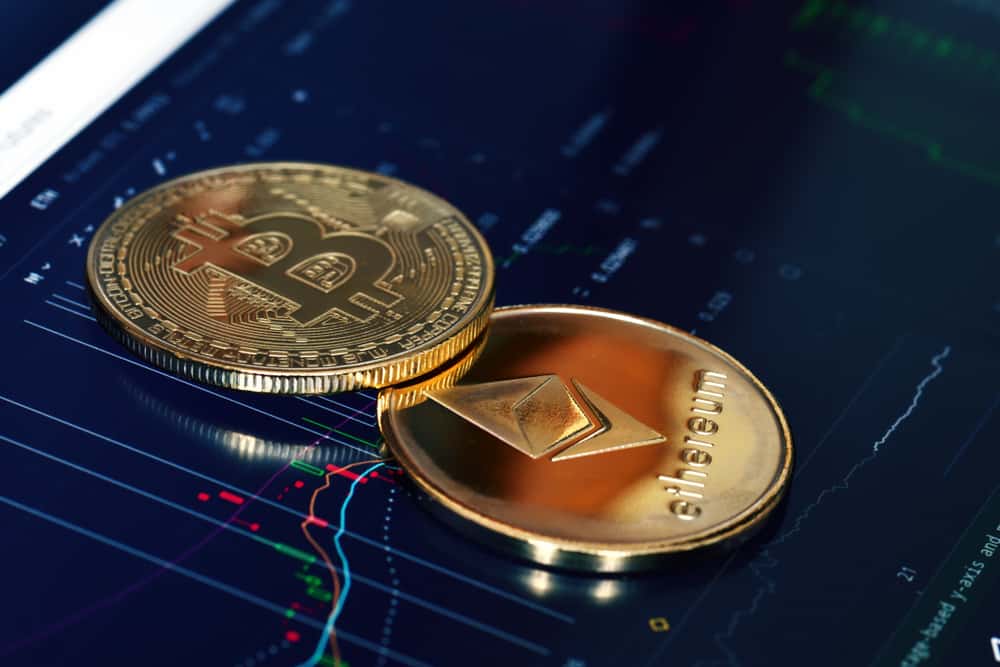Ethereum’s Market Share Takes a Hit as ETH Struggles Against Bitcoin
29.03.2025 13:00 2 min. read Alexander Stefanov
Ethereum's blockchain underwent a significant shift on September 15, 2022, moving from a proof-of-work (PoW) security model to proof-of-stake (PoS).
This change, known as “The Merge,” was expected to usher in a new era for Ethereum (ETH), with the goal of reducing its energy consumption and positioning ETH as a deflationary asset, or “ultrasound money.” However, since then, Ethereum’s performance, particularly in comparison to Bitcoin (BTC), has been disappointing.
When Ethereum transitioned to PoS, the value of ETH relative to BTC was 0.074 BTC per ETH. Fast forward to today, and that ratio has drastically dropped to just 0.022 BTC, marking a staggering 70% decline in value. This is a significant underperformance considering the promise of Ethereum’s new model.
Ethereum’s market cap dominance has also taken a hit. At the time of the Merge, ETH represented 17.7% of the total cryptocurrency market cap, while Bitcoin held 37.6%. Since then, ETH’s dominance has shrunk drastically, falling to just 8%, while Bitcoin’s market dominance has surged to 58.9%.
The so-called “flippening” — when ETH was expected to surpass BTC in market cap — has become even more distant. At the time of the Merge, Ethereum was 44.4% of the way toward overtaking Bitcoin, needing just a 2.3x rally to do so. Today, however, that ratio has plummeted to 13.8%, meaning Ethereum would need a 7.3x rally to flip Bitcoin.
-
1
First-Ever Staked Crypto ETF Set to Launch in the U.S. This Week
01.07.2025 9:00 2 min. read -
2
LINK Stuck Below $15 as Whales Accumulate and Retail Stalls, CryptoQuant Reports
03.07.2025 19:00 2 min. read -
3
Crypto Inflows hit $1B Last Week as Ethereum Outshines Bitcoin in Investor Sentiment
07.07.2025 20:30 2 min. read -
4
Sui Price Prediction: SUI Surpasses BNB and HYPE Trading Volumes in June – $10 by July?
02.07.2025 18:40 3 min. read -
5
Ethereum Price Prediction: ETH Ongoing Accumulation Favors Bullish Outlook – Can It Rise to $5,000?
08.07.2025 16:35 3 min. read
Dogecoin Soars 11% as Bit Origin Bets $500M on Meme Coin Reserves
Dogecoin posted an 11% surge in 24 hours, powered by institutional moves, bullish chart signals, and growing altcoin momentum.
Dogecoin Price Prediction: DOGE Volumes Nearly Double – Can It Get to $1 In This Cycle?
Dogecoin (DOGE) has gone up by 10% in the past 24 hours and currently sits at $0.2360 as the top meme coin is playing catch-up with newcomers to maintain its leadership. In the past 30 days, DOGE has shined as it has delivered gains of 40.5%. Trading volumes in the past day have surged by […]
Binance to Support Maker (MKR) Token Swap and Rebranding to Sky (SKY)
Binance has officially announced its support for the upcoming token swap, redenomination, and rebranding of Maker (MKR) to a new token named Sky (SKY).
Top 10 Trending Cryptocurrencies, According to CoinGecko
As of July 18, 2025, the cryptocurrency market continues to showcase sharp volatility, led by meme tokens, Layer 1 innovations, and key large-cap assets.
-
1
First-Ever Staked Crypto ETF Set to Launch in the U.S. This Week
01.07.2025 9:00 2 min. read -
2
LINK Stuck Below $15 as Whales Accumulate and Retail Stalls, CryptoQuant Reports
03.07.2025 19:00 2 min. read -
3
Crypto Inflows hit $1B Last Week as Ethereum Outshines Bitcoin in Investor Sentiment
07.07.2025 20:30 2 min. read -
4
Sui Price Prediction: SUI Surpasses BNB and HYPE Trading Volumes in June – $10 by July?
02.07.2025 18:40 3 min. read -
5
Ethereum Price Prediction: ETH Ongoing Accumulation Favors Bullish Outlook – Can It Rise to $5,000?
08.07.2025 16:35 3 min. read


